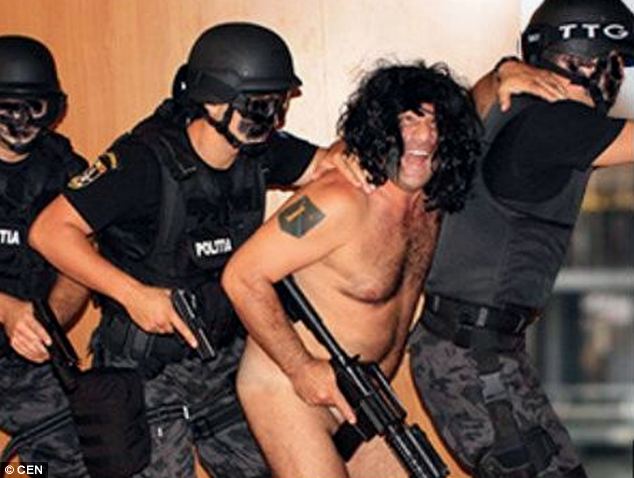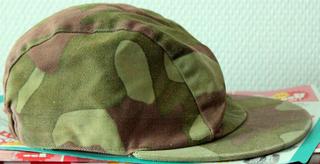Dependent on the foreign intelligence service of the Russian Federation, the Zaslon detachment has been engaged for several years in Syria where it carries out missions such as the protection of Russian personalities or the regime of Damascus. Matteo Puxton, an associate of History, a specialist in defense issues and a reference observer of the Iraq-Syria conflict, raises for France-Soir a bit of the veil that the Kremlin has placed on this unit of the Russian special forces.
Zaslon: the name will not evoke much, even to those who are interested in Russian security forces and the Russian army. And for good reason: this unit, one of the most secret of Russia, is surrounded by a veil of mystery. His presence in Syria, alongside the Syrian regime, is now a certainty.
The detachment Zaslon ("screen", Заслон in Russian) is a special unit that depends on the SVR, the foreign intelligence service of the Russian Federation. This service was born in 1991, after the disappearance of the USSR, but originates from the KGB and further to the Cheka. Among the SVR's missions is the protection of Russian institutions and nationals abroad. The Zaslon detachment was created in 1998 for this purpose. It was supposed to replace the Spetsnaz unit "Vympel", created by Yuri Andropov in 1981, attached to the KGB, then after the fall of the USSR to the MVD and finally, from 1995, to the FSB. A unit of the same type already existed under the authority of the 1st KGB leadership at the time of the USSR: it carried out special missions in Afghanistan. Zaslon relies on SVR's S direction to infiltrate agents abroad. The Zaslon detachment would be, precisely, the 7th department of the SVR.
The existence of the Zaslon detachment is not recognized by the Russian government: the latter would include 280/300 to 500 men, according to sources. It can also lead to targeted assassinations, among other special missions. In 2006, after the assassination of four Russian diplomats in Baghdad, the Zaslon detachment was assigned to "liquidate" the perpetrators of this act, allegedly the jihadists of Zarqawi (according to another version, the Russians claim that the SAS British would have killed the members of the embassy ...). Among the four killed was probably a member of Zaslon in charge of the security of the members of the embassy, Oleg Fedoseev. The body of the latter was buried in Russia in 2012. Russian sources claim that the Zaslon detachment evacuated the staff of the US embassy in Yemen, in Sanaa, in April 2015. At the outbreak of the Syrian conflict, Mikhail Fradkov, the head of the SVR until 22 September 2016, has this unit under his authority. He is replaced by Sergei Naryshkin, still at the head of foreign intelligence today. Alexander Smolkov, first deputy director, is in charge of SVR's first service, which is under the responsibility of the Zaslon detachment. When he was born in 1998, the detachment was commanded by A.S. Kolosov.
In 2012, the Zaslon detachment escorted SVR chief Mikhail Fradkov during his visit to Damascus. According to some sources, a Zaslon detachment group was deployed in Syria as early as May 10, 2013, both to protect Bashar al-Assad but also possibly to recover sensitive documents and materials in the event of a collapse of the Syrian regime. On 24 May 2014, visiting Russian Deputy Prime Minister Dmitry Rogozin, who is visiting Damascus, poses with members of the Zaslon detachment and publishes the images on his Twitter account: these are quickly erased.
In Syria, the presence of a detachment of the Zaslon unit is evident at the time of Russia's direct intervention in the conflict, in September 2015. This detachment does not respond to the orders of the GRU, the military intelligence, which has dispatched his own Spetsnaz to Syria, and who works with the Syrian Defense Ministry in Damascus. The Zaslon detachment is located at the Russian Embassy in Omar Ben Al Khattab Street, which is located near the Russian GRU officers in La Défense. If the detachment can serve to protect Russian personalities and buildings, or their Syrian counterparts, and can also participate in training or mentoring missions (it would appear that the Zaslon detachment is supporting the Syrian moukhabarat, the infamous secret services of the Damascus regime), it is perhaps still at the time, for Russia, to evacuate some important documents or equipment in the event of a fall of the regime (it was probably already the original mission of the group to his arrival in 2013 ...). There is a precedent since the Zaslon detachment was deployed in Iraq in the last days of Saddam Hussein's reign in 2003, both to evacuate embassy personnel and to retrieve certain documents (Operation "Breakthrough"). ..
In 2016, the Zaslon detachment is once again mentioned after the assassination of the Russian ambassador to Turkey, Andrei Karlov, on 19 December, by the Turkish policeman Mevlüt Mert Altıntaş. The interview of a member of this unit in the Russian daily Rosbalt underlines that Zaslon never received from Turkey the authorization to protect the members of the embassy (the question arose as early as the 1990s with the and coming from Chechen fighters in Turkey to heal or rest) because the unit would move heavily armed, which Turkey has never accepted. The Zaslon detachment is, in principle, limited in Syria to the tasks of security and protection of Russian personnel, unlike the Spetsnaz of the GRU and the KSO (Special Operations Command), which carry out more military tasks in Syria.
In February 2018, a video of the Zvezda channel, on the occasion of the anniversary of the Russian special forces (February 27), shows members of the Zaslon detachment on the roofs of the Damascus embassy and surrounding buildings, with members Russian special forces.
On December 10, 2018, the television channel Rossiya 24 broadcasts a documentary filmed at SVR HQ in the Yasenevo district of Moscow. The Zaslon detachment is shown in training: the men are equipped with Vityaz-SN submachine guns, with AN / PEQ-15 laser sights, Valdai MN-230 night vision goggles, Peltor-3M anti-noise helmets, Aimpoint Micro T-1 sights, LSHZ 1+ headsets.
The Zaslon Detachment does not have an emblem, badge, or uniform to distinguish it when operating in the field. On the other hand, its members often carry a patch when they are on a mission abroad with the words "Russian Embassy" sometimes translated into the local language, as is the case in Syria. On Russian sites, however, there are emblems or pennants associated with the unit.
One of the most secretive and therefore least known units of the Russian special forces, the Zaslon detachment, by its presence in Syria, also illustrates Russia's desire to demonstrate its return on the international scene. The Russian intervention remains, we must not forget, a projection of military power.















